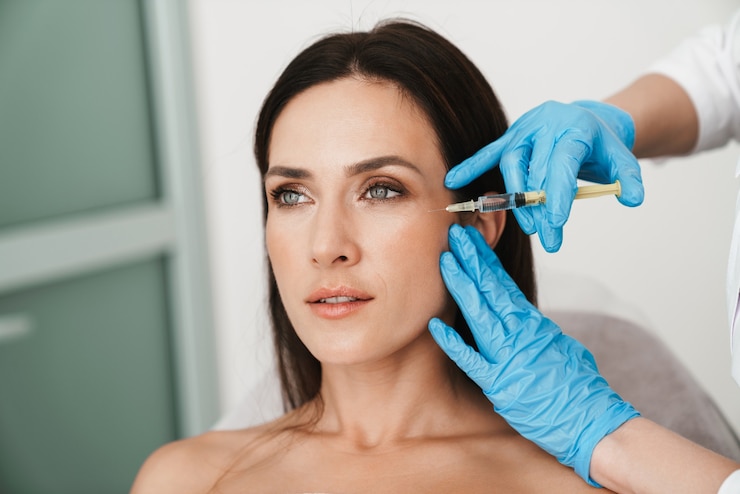As we age, our faces naturally lose volume and elasticity, leading to sagging skin and a less defined facial structure. One of the most effective ways to combat these changes and restore a youthful appearance is through Cheek Filler injection in Dubai. This non-surgical treatment has gained popularity for its ability to enhance facial contours, improve symmetry, and rejuvenate the overall look. In this article, we will explore how cheek fillers work, their benefits, and what to expect during the procedure.
Understanding Cheek Fillers
Cheek fillers are injectable substances used to restore volume in the cheeks and improve facial contours. The most common types of fillers used for this purpose include:
Hyaluronic Acid Fillers
Hyaluronic acid (HA) is a naturally occurring substance in the body that attracts moisture and adds volume. HA fillers, such as Juvederm and Restylane, are popular choices for cheek enhancement due to their ability to provide immediate results and their reversible nature. These fillers typically last from six months to a year, depending on individual factors and the specific product used.
Calcium Hydroxylapatite Fillers
Calcium hydroxylapatite (CaHA) fillers, like Radiesse, are known for their ability to provide immediate volume while also stimulating collagen production over time. The effects of CaHA fillers can last up to a year or more, making them a long-lasting option for cheek enhancement.
Poly-L-Lactic Acid Fillers
Polylactic acid fillers, such as Sculptra, work differently than traditional fillers. They stimulate the body’s collagen production gradually rather than providing instant volume. As a result, the effects develop over several months and can last up to two years, offering a more natural and long-term solution for facial rejuvenation.

Benefits of Cheek Fillers
Cheek fillers offer a multitude of benefits for those seeking a youthful contour solution:
Restores Volume and Lift
One of the primary benefits of cheek fillers is their ability to restore lost volume in the cheeks. As we age, the fat pads in our cheeks diminish, leading to a sagging appearance. By injecting fillers into the cheeks, practitioners can create a lifting effect that enhances the overall facial structure.
Improves Facial Contours
Cheek fillers can create a more sculpted appearance by enhancing the natural contours of the face. This is particularly beneficial for individuals with flat or hollow cheeks, as fillers can provide a more defined look and improve facial symmetry.
Non-Surgical Solution
Unlike surgical procedures like facelifts, cheek fillers are non-invasive, requiring minimal downtime. This makes them an attractive option for individuals looking to enhance their appearance without the risks and recovery associated with surgery.
Quick Procedure
Cheek filler injections are relatively quick, often taking less than an hour to complete. This convenience allows individuals to easily fit the procedure into their busy schedules.
Immediate Results
Patients can see immediate results after cheek filler injections, with optimal effects becoming more pronounced as swelling subsides. This instant gratification is one of the key reasons many people choose this treatment.
Customizable Treatments
Cheek fillers can be customized to meet each individual’s unique needs and aesthetic goals. Practitioners can adjust the type of filler, injection technique, and amount used to achieve the desired results.
Minimal Discomfort
Most patients experience only mild discomfort during the procedure, as many fillers contain lidocaine, a numbing agent. Additionally, practitioners may apply a topical anesthetic to the treatment area to further minimize any pain.
What to Expect During the Procedure
Consultation
Before receiving cheek fillers, individuals should schedule a consultation with a qualified practitioner. During this appointment, the practitioner will assess the patient’s facial structure, discuss their aesthetic goals, and recommend the most suitable type of filler.
Preparation
On the day of the procedure, the treatment area will be cleansed, and a topical anesthetic may be applied to ensure comfort during the injections.
Injection Process
Using a fine needle or cannula, the practitioner will carefully inject the filler into specific areas of the cheeks. The amount and placement of the filler will be tailored to achieve the desired contour and volume.
Post-Treatment Care
After the injections, patients may experience mild swelling, bruising, or redness at the injection sites. These effects typically resolve within a few days. Practitioners will provide aftercare instructions to help ensure optimal results.
Long-Lasting Effects
The longevity of cheek fillers varies depending on the type of filler used and individual factors. Hyaluronic acid fillers generally last six months to a year, while calcium hydroxylapatite fillers can last up to a year or more. Poly-L-lactic acid fillers stimulate collagen production, offering longer-lasting effects that can extend up to two years.
Conclusion
Cheek fillers are an effective and non-surgical solution for restoring youthful contours to the face. With their ability to enhance volume, improve facial symmetry, and provide immediate results, cheek fillers have become a popular choice for individuals seeking a rejuvenated appearance. If you're considering cheek fillers, consult with a qualified practitioner to discuss your goals and determine the best approach for achieving the youthful look you desire.





Comments